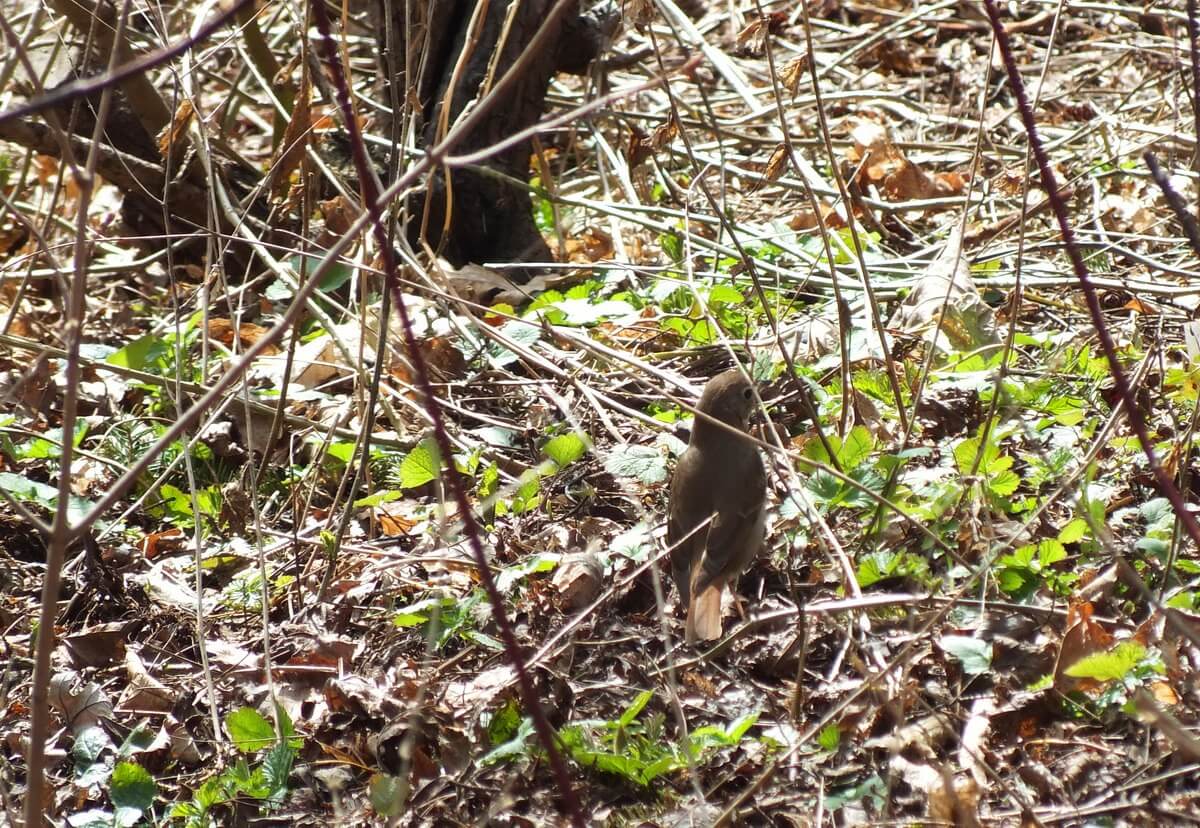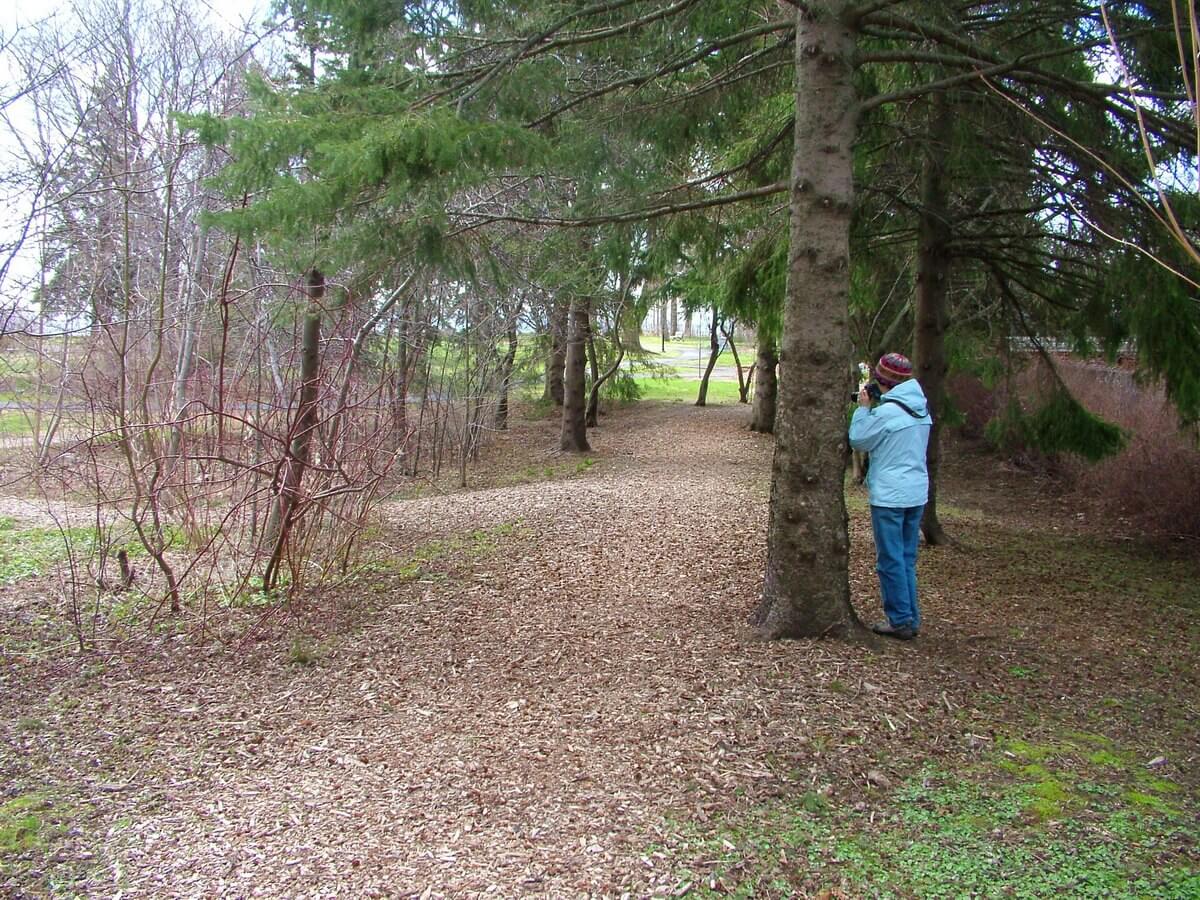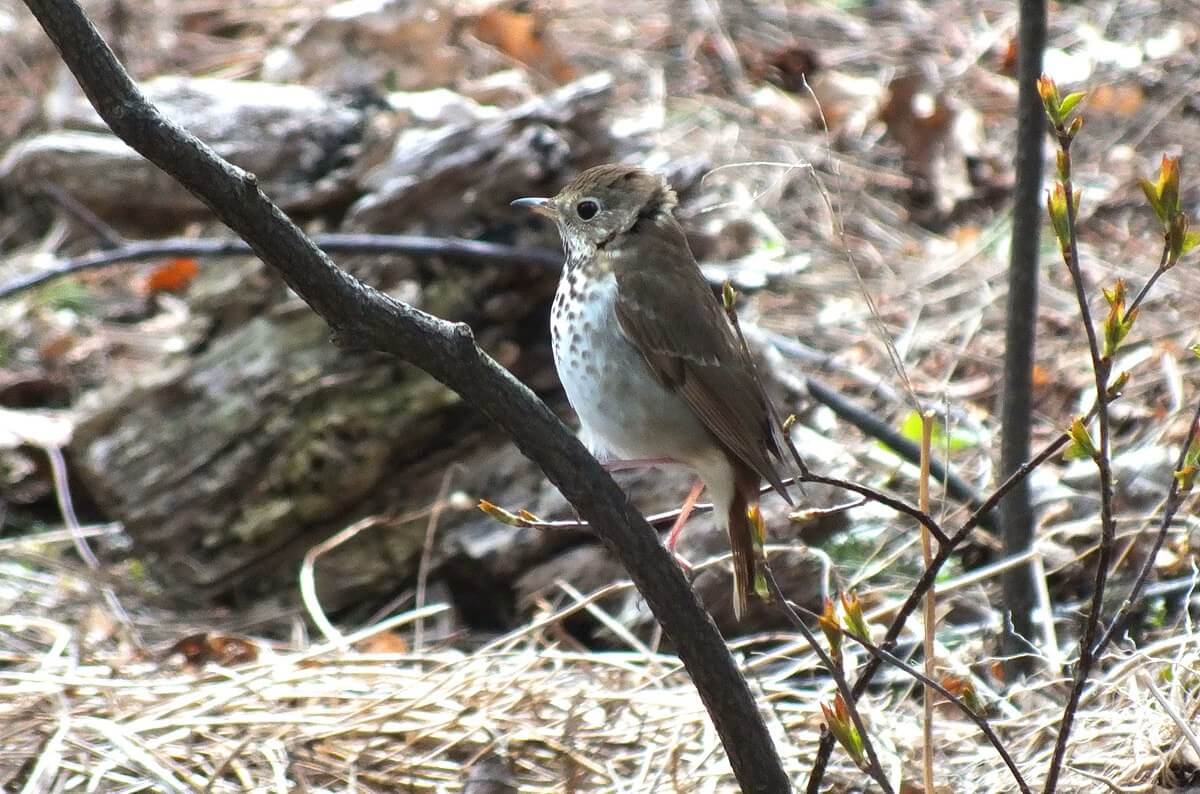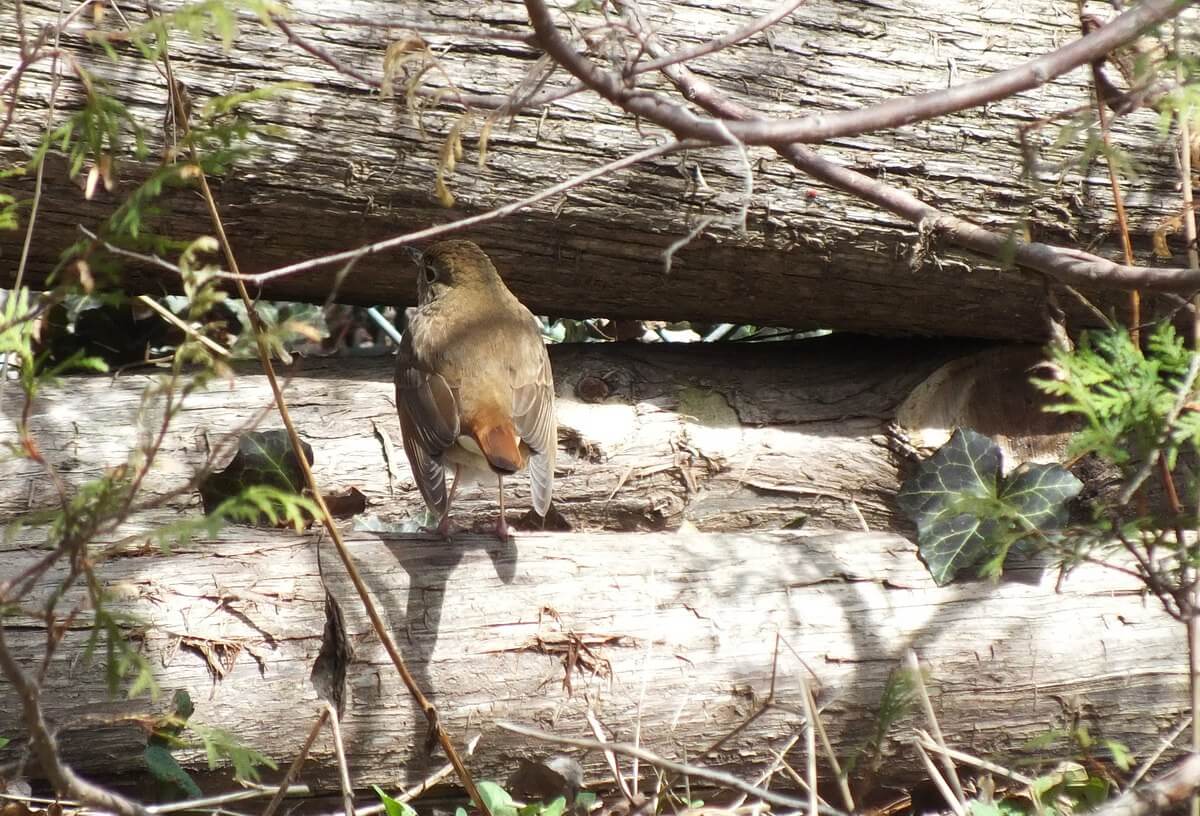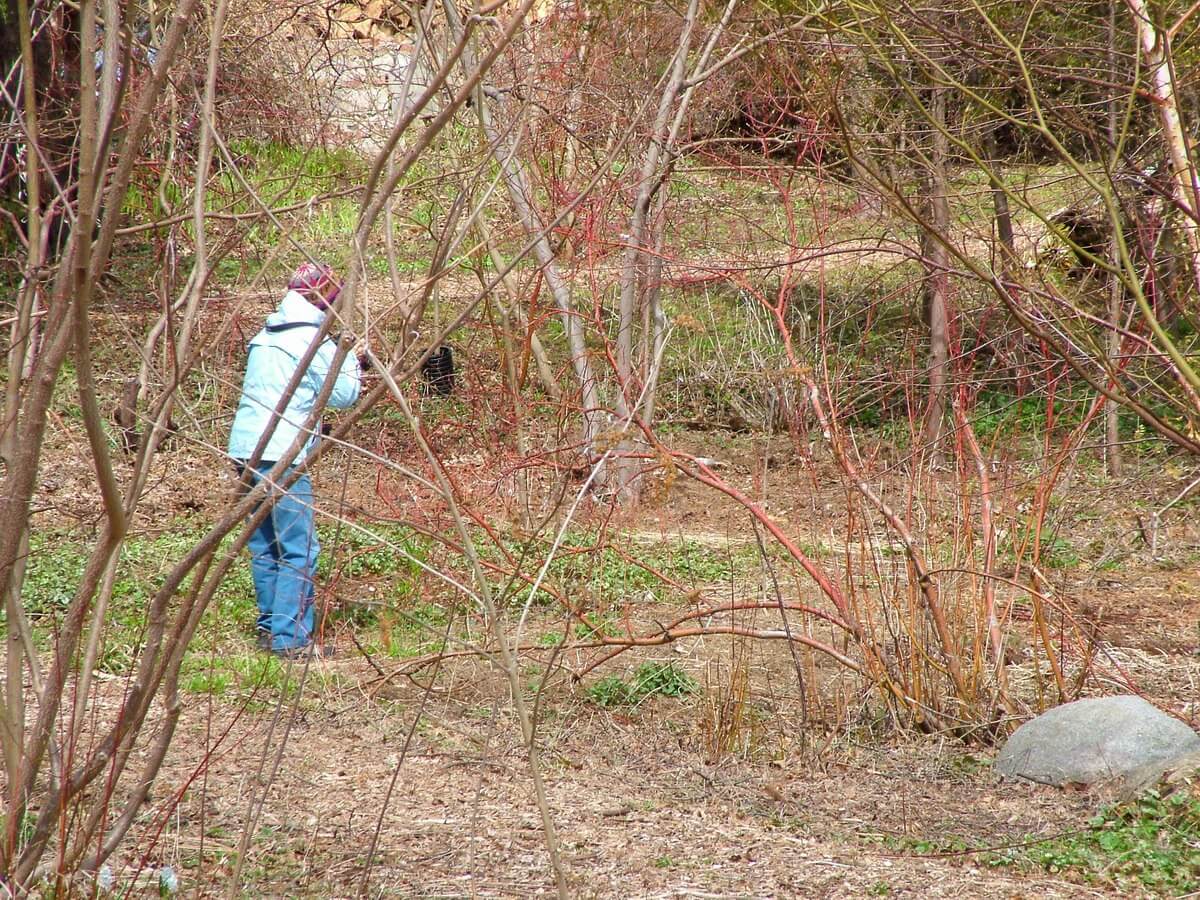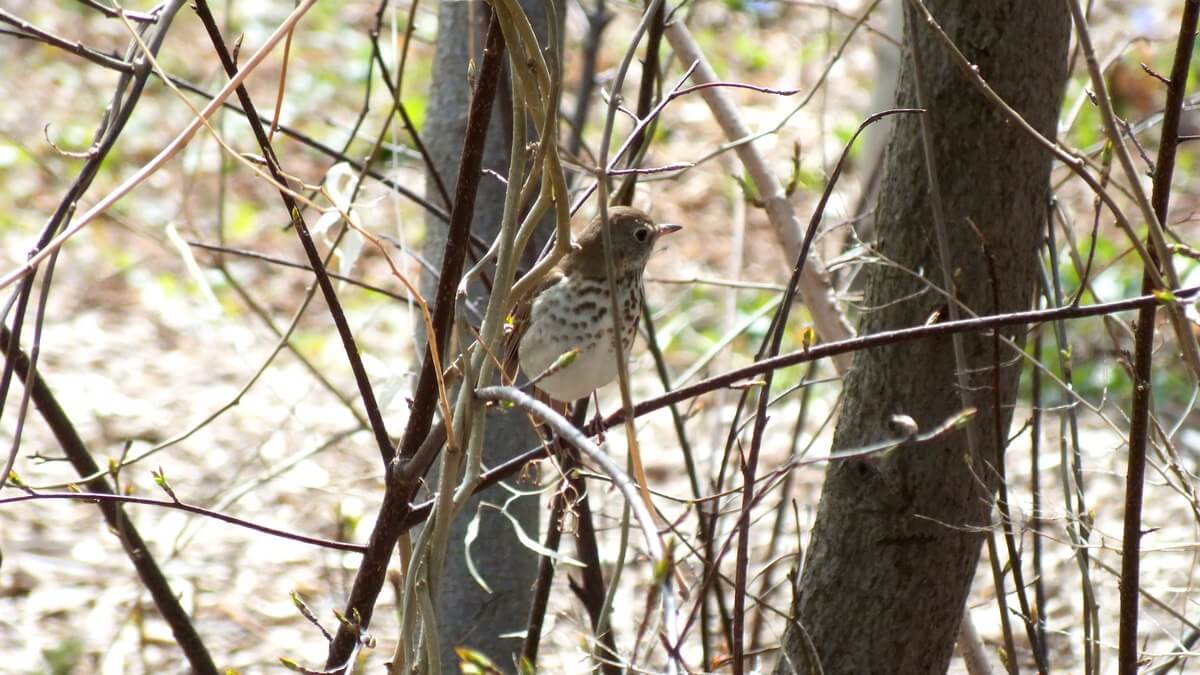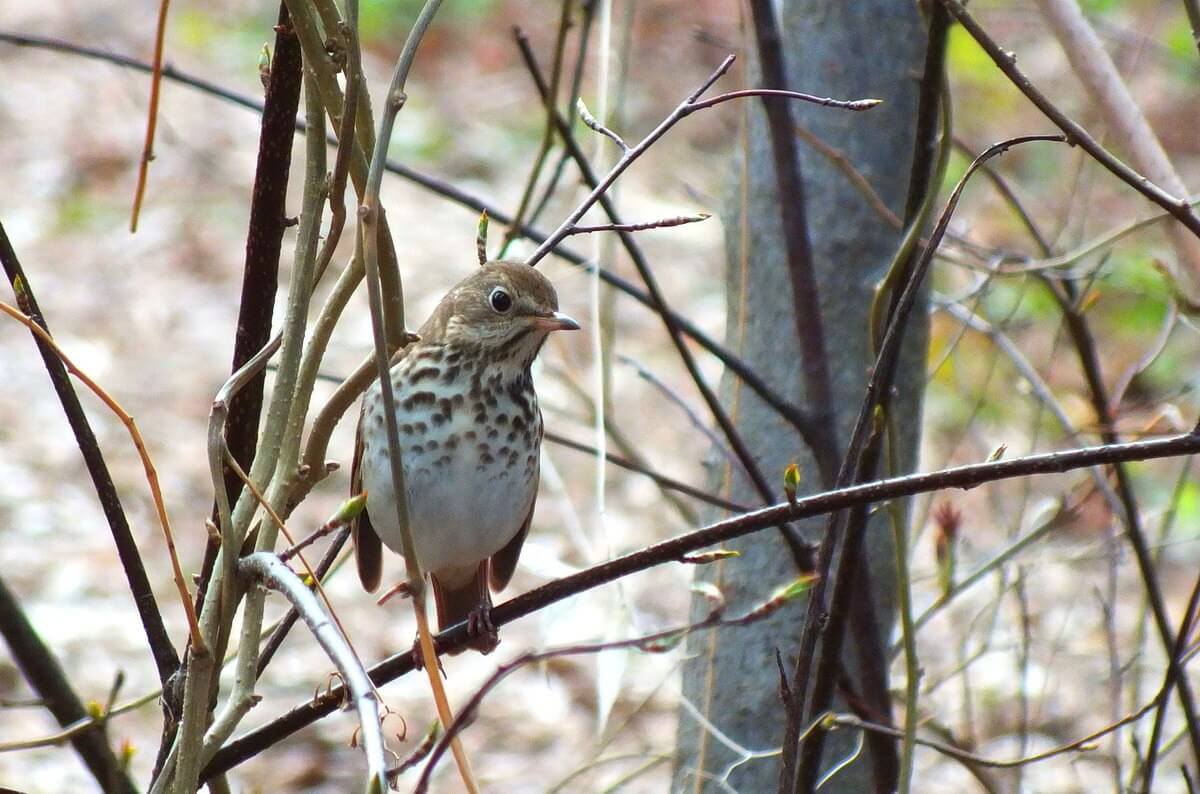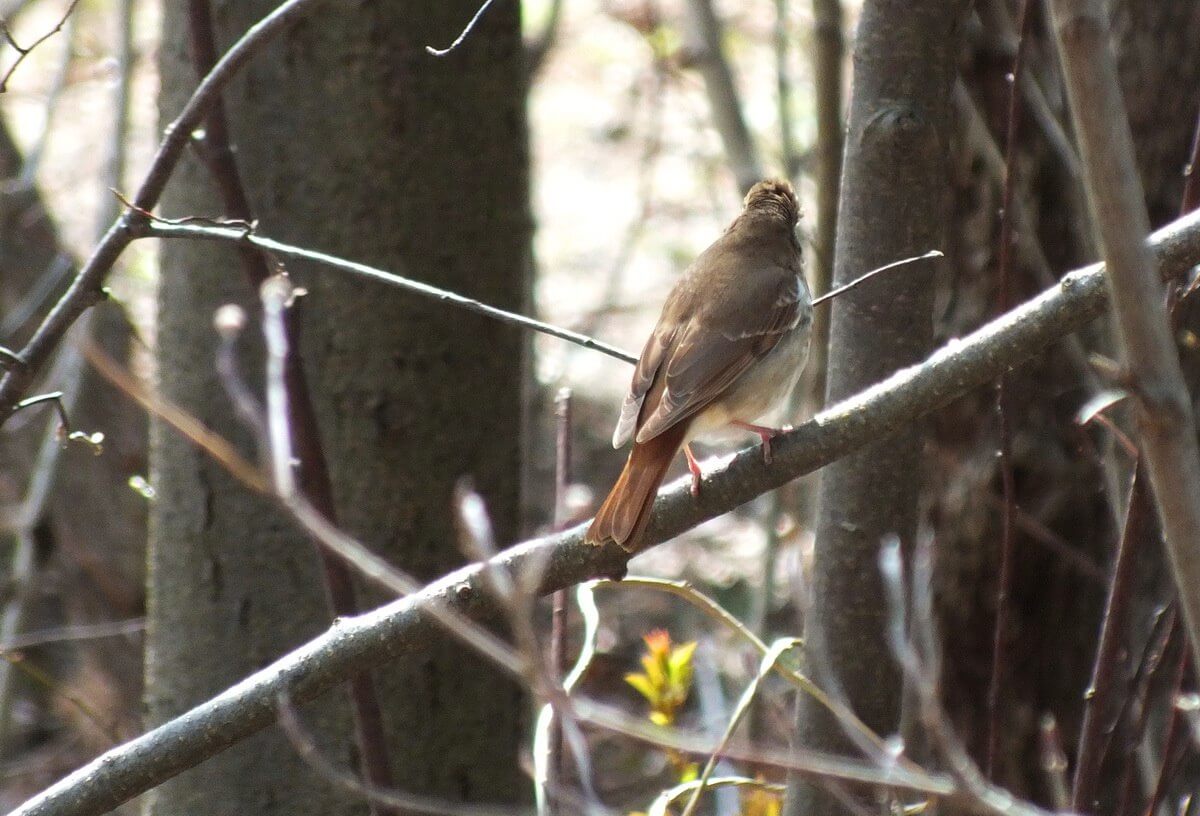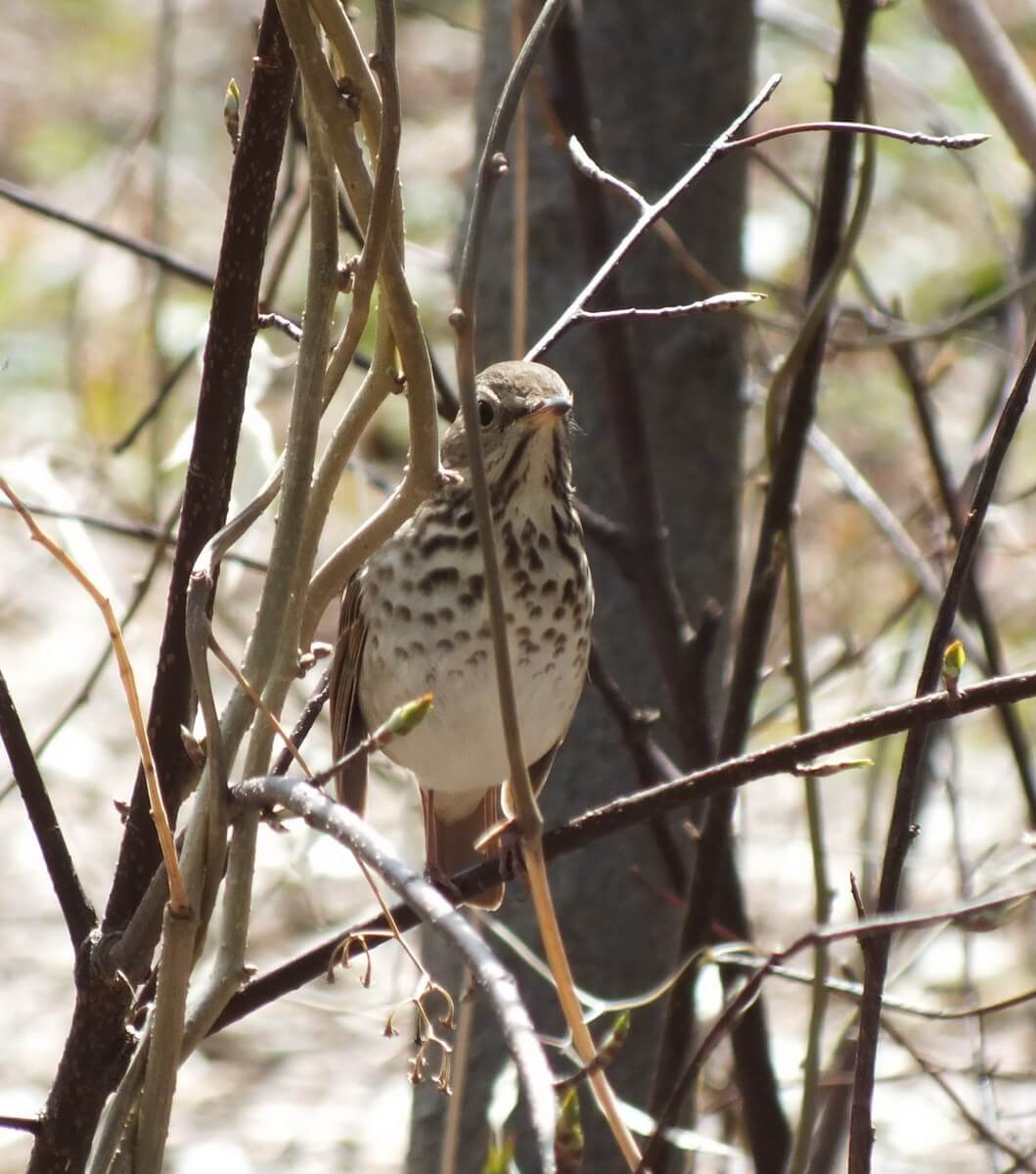Hermit Thrush On The Hunt At Rosetta McClain Gardens
Bob and I are never disappointed when we visit Rosetta McClain Gardens in Scarborough, Ontario, Canada. Serving as an enticing spot for migrating birds to pause and rest after crossing Lake Ontario, the Gardens usually are home to a variety of warblers and other songbirds, if for only brief periods of time. On one of our trips to the Gardens one spring, we were lucky enough to catch up with a couple of Hermit Thrushes.
It was no surprise to find the Hermit Thrushes rummaging about the leaf litter under a thicket alongside the trail as that is their routine when foraging for insects. The Hermit Thrushes were constantly on the move, hopping and scraping and occasionally seizing an insect with their bills. Insects make up the bulk of a Hermit Thrush’s diet during the warm months of the year, and they feed largely on terrestrial insects.
Bob and I visited the Gardens in early May so the cool temperatures had us sporting toques and wind-proof jackets. I had to be discreet when trying to snap photos of the Thrushes because they seemed quite timid.
I was rewarded when one of the Hermit Thrushes perched low to the ground on the slim trunk of a bush. These birds make it a practice to keep hidden by thick brush and only occasionally wander out into the open. There, where the sunlight penetrated the leaf cover, we were able to get a good look at the Thrush. We noted the round head and fairly long tail that is common to these and other thrushes.
A fallen log at the edge of an open area had one of the Hermit Thrushes hopping up onto it and basking in the warm rays of the sun. It certainly afforded us a lovely view of its olive-brown back and reddish-brown rump and tail.
I was kept busy trying to keep my eye on the two birds because their plumage blended in so well with the brown earth, blonde wood chips and weathered leaves.
It is uncommon to see Hermit Thrushes in backyards or at feeders although a couple of years earlier, we had what we thought was a Hermit Thrush in our suburban garden. A more knowledgeable birdwatcher pointed out that our visitor was actually a rarer Grey-cheeked Thrush. The two species are very difficult to differentiate. When Hermit Thrushes are migrating, they will occasionally visit backyards that offer trees and shrubs for cover, and there they will forage for insects and any berries that might be available.
I was pleased to get this closer view of one of the Thrushes because the colouring of the plumage is shown to good advantage. The whitish underparts show a pale buff suffusion across the breast, and the throat has large, wedge-shaped spots that are blackish-brown becoming less distinct down the breast and towards the belly. The sides of the throat have similarly coloured narrow streaks, the thin, white eyering sets off the thrush’s dark eye, and the beak is dark with a pink base.
Hermit Thrushes breed anywhere from Alaska eastward across much of forested Canada to Newfoundland and south to southern California and northern New Mexico.
Although Bob and I did not hear either of the Hermit Thrushes break into song on that day at Rosetta McClain Gardens, we know from previous experiences just how beautiful their song can be. These birds are considered by many to be the finest singers of all North American birds. In the quiet of a northern woods, on a warm summer evening, I could not agree more.
Frame To Frame – Bob and Jean


